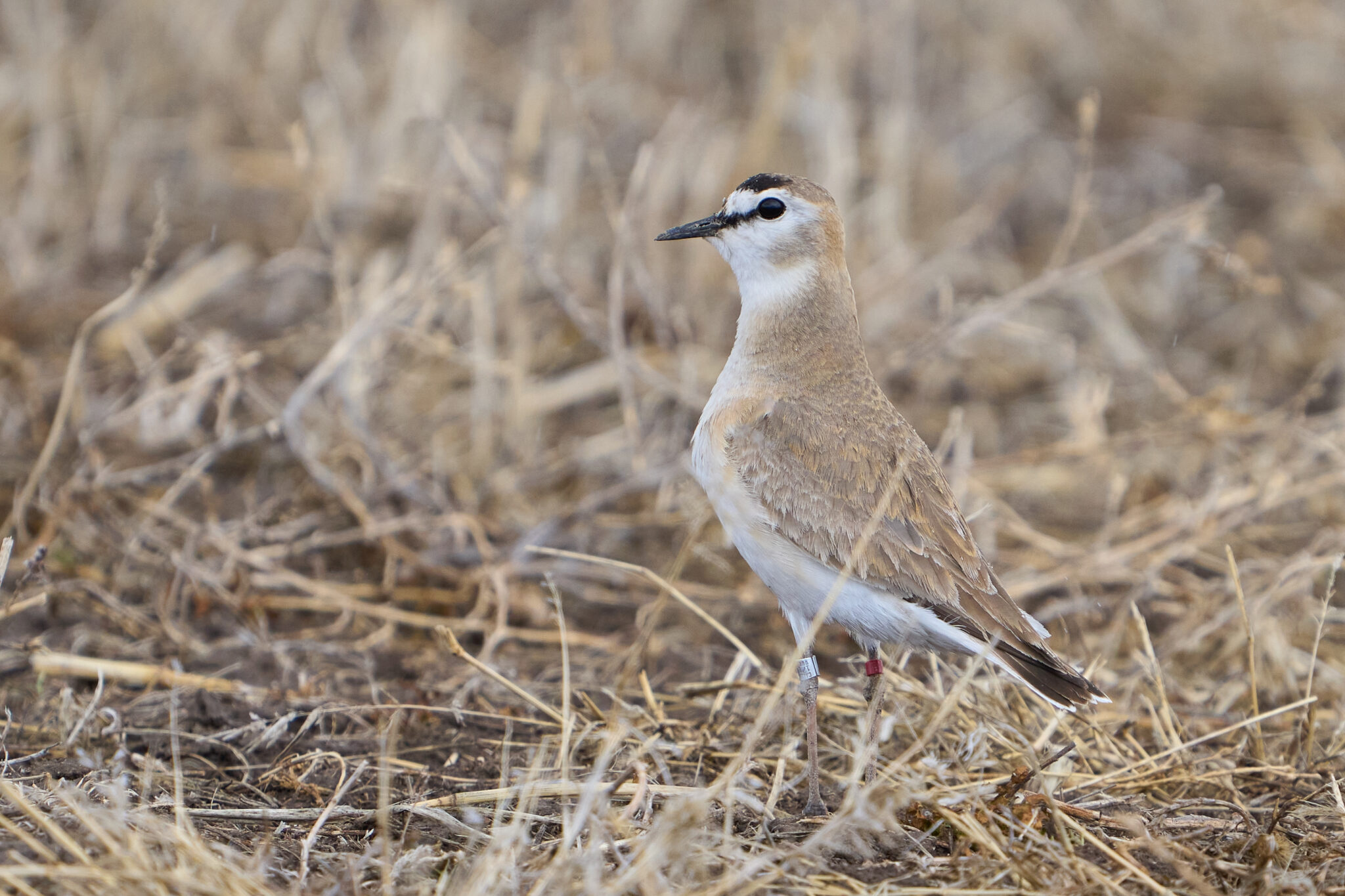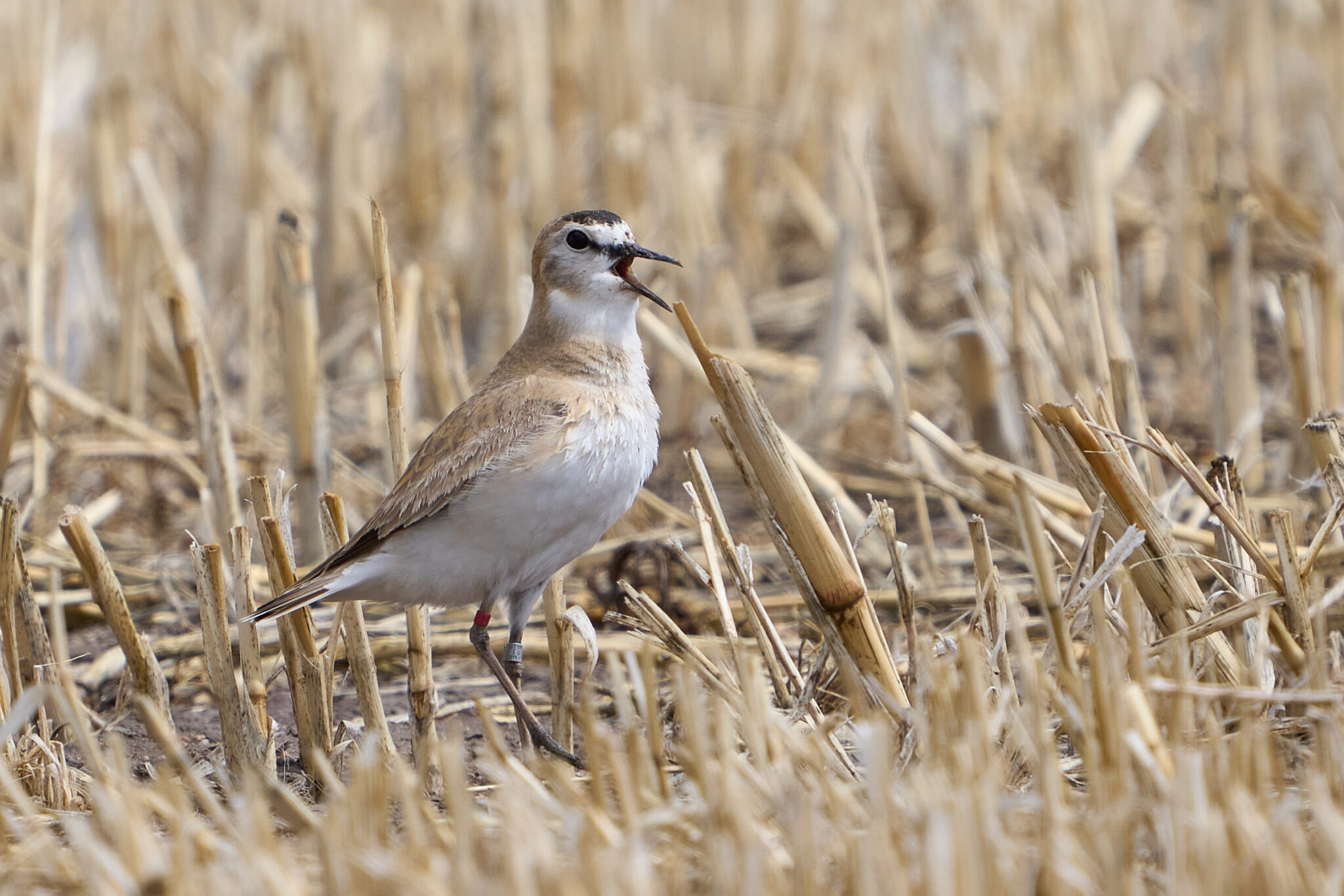The arid, shortgrass prairie and farm fields of the panhandle of Western Nebraska are the last place you might think to look for a shorebird. But this is exactly the place that Thane Dinsdale found himself on May 12, 2024 near Kimball, Nebraska searching for the elusive Mountain Plover also referred to as the prairie ghost.

As Thane scanned the fields with his spotting scope fortune was on his side. A single eight-inch-long, adult Mountain Plover, the exact color of the prairie crossed into his field of view off in the distance. A proverbial needle in a haystack.
As he looked closer at the bird, he got an extra surprise. This particular bird had a red band on its right leg and a silver band on its left. Realizing how special this moment was, Thane snapped a few photos and submitted the sighting to eBird.
The eBird record eventually was relayed to Angela Dwyer, Bird Conservancy of the Rockies Program Manager on the Stewardship Team. As part of her work, Angela has coordinated several Mountain Plover projects in Nebraska, including work from 2013-2015, led by then Masters student and current Bird Conservancy of the Rockies Banding Manager, Colin Woolley.
For his Masters work, Colin was interested in understanding how Mountain Plovers utilized agricultural fields for nesting, including understanding how large their territories are. This work involved capturing and attaching a unique combination of three different colored leg-bands to 15 Mountain Plovers so individuals could later be positively identified through observation from binoculars or a spotting scope. Colin also attached a United States Geological Survey metal band with a unique serial number that could be used to track an individual throughout its lifetime if it was ever captured again.

Excited for the opportunity to identify the mystery bird, Angela and Colin looked closely at Thane’s photos. Fortunately, a few of the numbers on the metal band were readable. That, combined with the single red band (color bands generally wear out and fall off over time) that remained on the other leg allowed for a positive identification. Thus, we know Colin banded this bird as a 20-day old chick on July 4, 2014, also near Kimball, Nebraska.
Since the day this bird was banded was the 4th of July, he/she received a red, white, and blue color band combination and was named “Sam” in honor of Uncle Sam. It turns out Sam was spotted near Kimball once before, way back in 2016 by Kathy DeLara, two years after Colin originally banded him/her.
Sam is now a 10-year-old Mountain Plover, which is fairly old. Mountain Plovers are thought to live anywhere from 8-15 years. That alone makes this sighting so special. Mountain Plovers also travel great distances each year from their breeding grounds on the Great Plains to their wintering grounds in California, southwest United States and Northern Mexico. The U.S.-Mexican border is around 800 miles from Kimball, Nebraska. If we assume Sam migrated to that general location each year and back, it’s possible that he’s traveled over 8,000 miles in his lifetime!
Finally, Mountain Plover populations have declined by over 80% since 1968, with another 50% of their population at risk over the next 50 years. Currently it is estimated that only 20,000 birds remain in the world. Sam is indeed a rare bird and a very rare find. Colin and Angela’s work is critical in helping us to better understand these elusive birds’ behavioral patterns and habitat use, which can in turn help reverse these declines. So as we approach another 4th of July, let’s take a moment to celebrate Sam and all the work being done to help these shorebirds maintain their homes on the range.
 Angela Dwyer is a Program Manager for Bird Conservancy of the Rockies.
Angela Dwyer is a Program Manager for Bird Conservancy of the Rockies.









